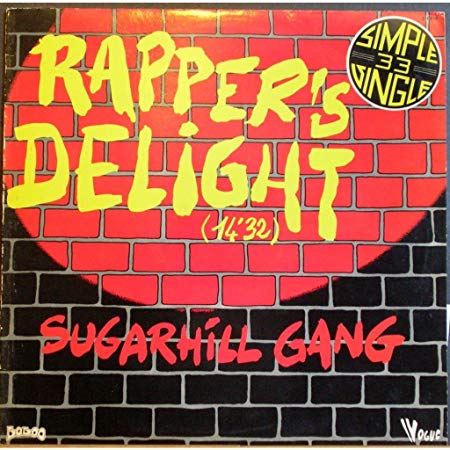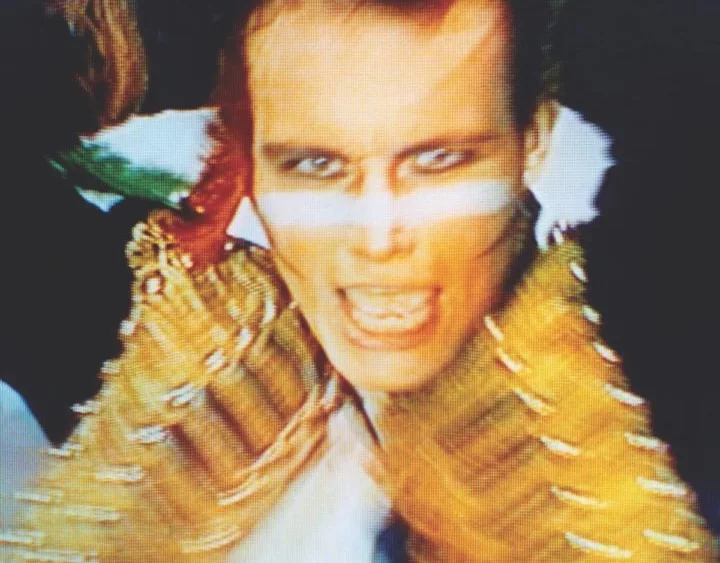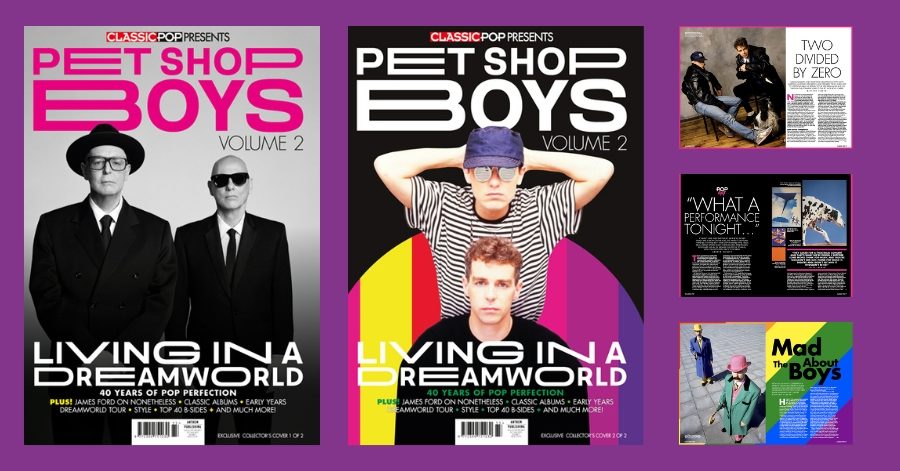 Downtown Manhattan at the dawn of the 80s was the epicentre of a dazzingly influential moment in pop culture that forged the decade and pointed the way into the 90s… By Gareth Murphy
Downtown Manhattan at the dawn of the 80s was the epicentre of a dazzingly influential moment in pop culture that forged the decade and pointed the way into the 90s… By Gareth Murphy
Typically, a musical happening acquires a genre term. But every now and then, there are happenings referred to only by a time and a place. New York in the 1979 to ’82 period is possibly the most spectacular example.
Too big for any one genre label to fit, this mother of all melting-pot eruptions shaped the popular landscape for at least two decades to come.
To understand what was happening and why it was concentrated in Downtown Manhattan, the story begins in the bankrupt mid 70s, when New York City was a rat-infested wasteland of junkies and crumbling brownstones.
From a grotty Downtown club called CBGB, the Ramones detonated the punk explosion, but the word ‘punk’, meaning scumbag or petty criminal in American slang, was always going to be a hard sell to American radio stations.
That’s why, in and around late 1977, the term ‘New Wave’ was popularised by indies such as Sire. The idea was to persuade sceptical jocks to spin punkish records such as Psycho Killer by Talking Heads, which to be fair, weren’t really punk anyway.
The idea took off and New Wave became synonymous with punk’s prettier cousins on both sides of the Atlantic: Blondie, Talking Heads, Devo, Ian Dury & The Blockheads, Lene Lovich, The Stranglers, Elvis Costello, XTC and others who rose up on the back of punk but, being ‘real’ musicians to begin with, made ever-more slick and radio-friendly records through 1978.
At exactly the same time, disco was exploding on a grand scale. But in its original form, it too had begun as a local DIY subculture. In the early 70s, long before the uptown disco palaces such as Studio 54 opened, a pioneer DJ named David Mancuso had been turning cheap loft spaces into makeshift party zones with lighting, balloons and state-of-the-art amplification.
And because Mancuso grew up in a multicultural orphanage, he wanted his loft parties to embody the principles of diversity and community. Everyone was welcome: black, Latino, white, gay, straight, young, old, poor… It was the same for the records he mixed: Afrobeat, European electronica, percussive, psychedelic, soul, Latin, funk and more.
The rapid proliferation of loft parties throughout the mid 70s in turn changed the landscape of New York’s indie record stores. Inspired by Mancuso, a new generation of loft-party DJs – Larry Levan, Nicky Siano, Danny Krivit and many others – were scouring the city for rhythmic rarities.
Noticing this growing niche, independent distributors and importers began consolidating their own alternative networks around specialist indie stores where a new generation of musos and party people, bored of mainstream rock, was congregating in growing numbers.
- Read more: The complete guide to Talking Heads
Disco inferno
Between 1977 and 1978, every major label jumped on the bandwagon and churned out so much shlocky disco product that the genre boomed and experienced a sudden backlash. By 1979, the ‘Disco Sucks’ movement actually saw a football stadium in Chicago burning disco records.
The forced closure of Studio 54 in 1980 after its owners were imprisoned for tax evasion was symbolic of what was happening generally. Glam disco was dying, raw punk was passé and even New Wave was morphing into something different again.
But the underlying principles that disco and punk had championed – diversity and doing it yourself – lived on. The action was moving downtown where, thanks to cheap rent and a local arty community, post-punky disco clubs were being opened inside former warehouses and factories.
On 36 West 62nd Street, there was Hurrah, which became the first to use giant videoscreens. Another hotspot was Paradise Garage, which opened in 1977 in the Hudson Square neighbourhood.
Geared towards a largely gay crowd, its resident DJ Larry Levan became instrumental in forging the now-familiar club formula of hard beats and strobe lighting.
The Mudd Club on White Street in the TriBeCa district opened in 1978 and was the place where artists such as Keith Haring and Jean-Michel Basquiat rubbed shoulders with the likes of Bowie and Eno, who both moved into New York around 1979 to feed off this new energy.
Although small, the Mudd Club in particular became a beehive: Talking Heads tested new material for their tide-changing third album, Fear Of Music, on the club’s stage while it was being recorded in Tina Weymouth and Chris Frantz’s loft.
Like the Ramones before them, Talking Heads were signed to Sire Records, whose new, young A&R man at the time, Michael Rosenblatt, was a 20-year-old migrant from Los Angeles. In December 1977, he’d seen The B-52’s, who were duly signed to Sire’s parent company, Warner. Within a year, he brought to Sire an English New Wave single called Pop Muzik by M, which went to No.1 on the Hot 100.
“It was the tail-end of the whole CBGB era, when the likes of Andy Warhol and Lou Reed would come to see the Ramones,” Rosenblatt explains. “But I can’t emphasise enough how important Talking Heads were in what was taking shape. Tracks like I Zimbra or Crosseyed And Painless really captured the emerging sound. Everyone was watching Talking Heads.”
Scene stealer
Blondie’s 1980 No.1 smash hit, Rapture, managed to mix everything that was happening into one song – opiated post-punk on a post-disco groove with Debbie Harry rapping, and a graffiti artist tagging a wall in the accompanying video. Also shot in 1980, the video for Crosseyed And Painless by Talking Heads featured ‘robotics’ – the original term for hip-hop dancing.
The Downtown club that best embodied the punky-disco mutation was Danceteria, opened in 1979 on 37th Street by a German entrepreneur named Rudolf Pieper.
With three floors – one for live music, a basement discotheque and a top floor for exhibitions and performance art – it attracted a younger crowd. Resident DJ Mark Kamins developed his own distinct sound, mixing up improbable cocktails of UK indie, electronica and cutting-edge grooves from all over the world.
Kamins described the atmosphere in Danceteria as “anti-Studio 54. It was a circus without the rich.”
Them’s the breaks
In 1981, Tom Silverman remembers visiting a Bronx record store and being struck by a peculiar sight in the basement.
“There’s just a guy at a desk and behind him, there’s this strange selection of records: Bob James, The Monkees, Kraftwerk, The Incredible Bongo Band, Cerrone, Billy Squier, a certain record by the Eagles – all these records that seemingly had nothing to do with each other. But there’s this line of 17-year-old kids out the door, waiting to buy two copies of each.”
When Silverman quizzed the youngsters, they explained: “We buy what Afrika Bambaataa plays,” a reference to the Zulu Nation DJ whose mission was to spiritualise the ghettos with street culture. Or, as Rick Rubin put it: “Rap and early hip-hop was black punk,” the perfect hybrid between disco’s use of turntables as instruments, and punk’s DIY attitude of protest and self-empowerment.
And with this change in tempo, a new drug called ecstasy emerged in the Downtown clubs. “It started hitting the clubs in around 1982,” remembers Michael Rosenblatt.
“There was this woman called Cindy Ecstasy, whose boyfriend I think was actually making the stuff. She was one of the very first to make the connection between ecstasy and dance music. Soft Cell introduced me to her when we launched Non-Stop Erotic Cabaret in Danceteria. She gave me a tab and the rest is history.”
Cindy Ecstasy became such a local legend, she even sang on Soft Cell’s 1982 hit single Torch. Orbiting around this gang was a 24-year-old Madonna, who celebrated her imminent record deal with Sire by taking ecstasy with Rosenblatt in Danceteria. Her first 12″, Everybody, in late 1982, was a clubby groover produced by Mark Kamins.
Teenage tech
Throughout 1982, sounds became increasingly electronic as new technology evolved. The turn of the 80s had seen the birth of the Roland TR-808 drum machine, the Fairlight CMI sampler, MTV and the Sony Walkman. John Lennon had just been shot, Ronald Reagan had just been elected, New York was coming out of recession, and every American was buying VHS recorders and hooking up to cable TV.
Videogames such as Pac-Man, Donkey Kong, Space Invaders and Scramble were creating the ambient noise for a new generation of teenagers. Between 1981 and 1982 alone, arcade machines in North America tripled to 1.5 million. Bleeps, synths, drum machines and music videos were the new norm of a pop world that had never felt so globalist.
Tina Weymouth tells us the magic of the moment owed much to all this new technology. But it was also the wider political atmosphere that enabled such a can-do, multicultural scene to flourish.
“With gay-tolerant Mayor Koch and the opening of venues such as the Mudd Club, the whole racist ‘Disco Sucks’ narrow-mindedness was ditched. So, we might dance to a mix by Grandmaster Flash as Grace Jones got bodypainted by Keith Haring! The message was: ‘We are all radiant children!’”
“The thing about the Downtown scene is that it was so incredibly diverse,” concurs Michael Rosenblatt. “There were visual artists, writers, dancers, filmmakers, punks, Latino musicians, sounds from all over the world. The hip-hop guys like Afrika Bambaataa were there, even the English tastemakers like New Order were constantly passing through.
“Everyone was hanging out and feeding off each other. I don’t think there’s been anything like it before or since. It’s one of the most overlooked moments in pop culture and yet it’s probably the most explosive.”
- Want more from Classic Pop magazine? Get a free digital issue when you sign up to our newsletter!
The post This Ain’t No Disco – New York City in the 80s appeared first on Classic Pop Magazine.





